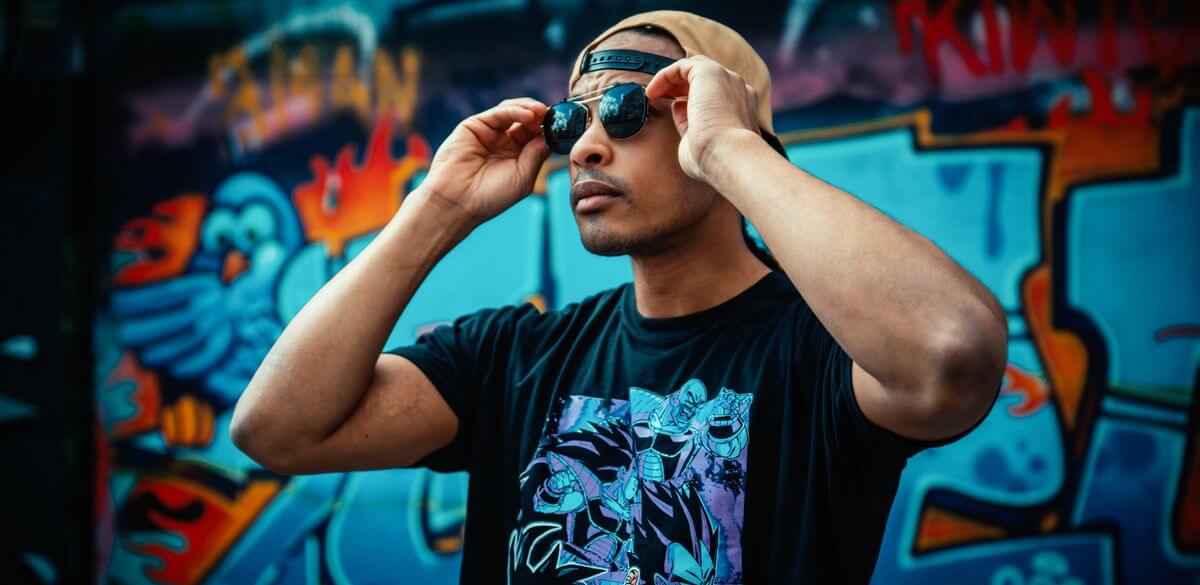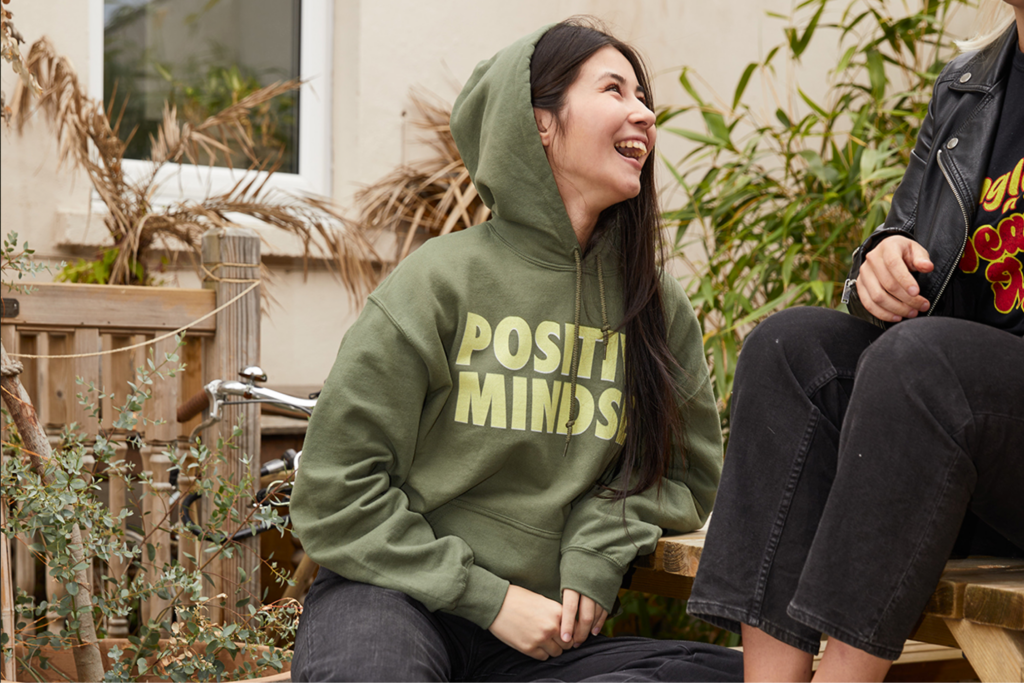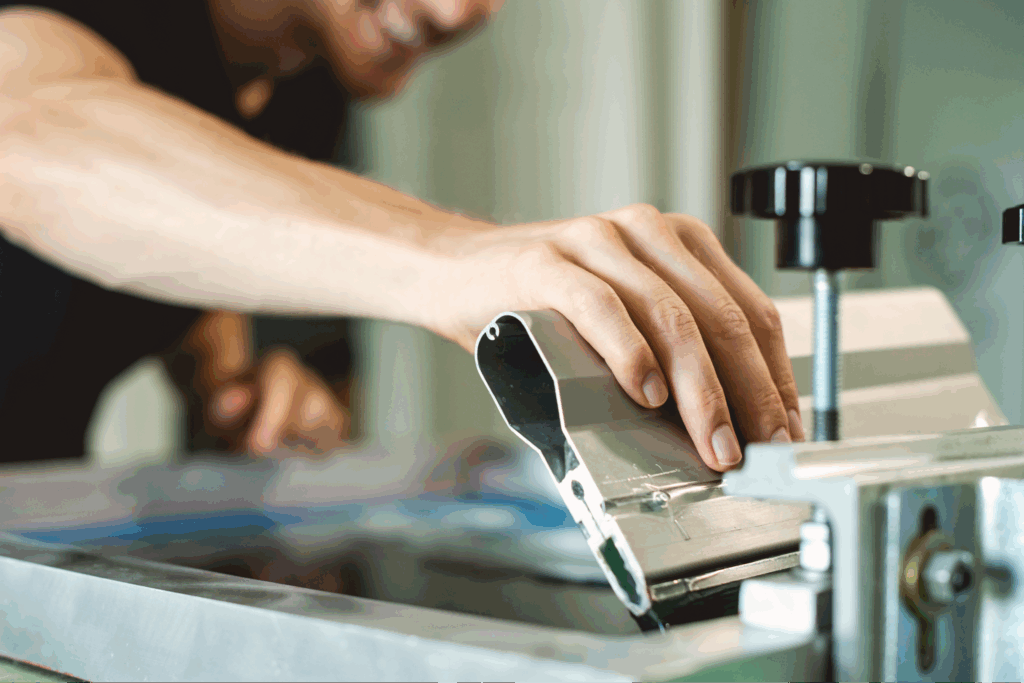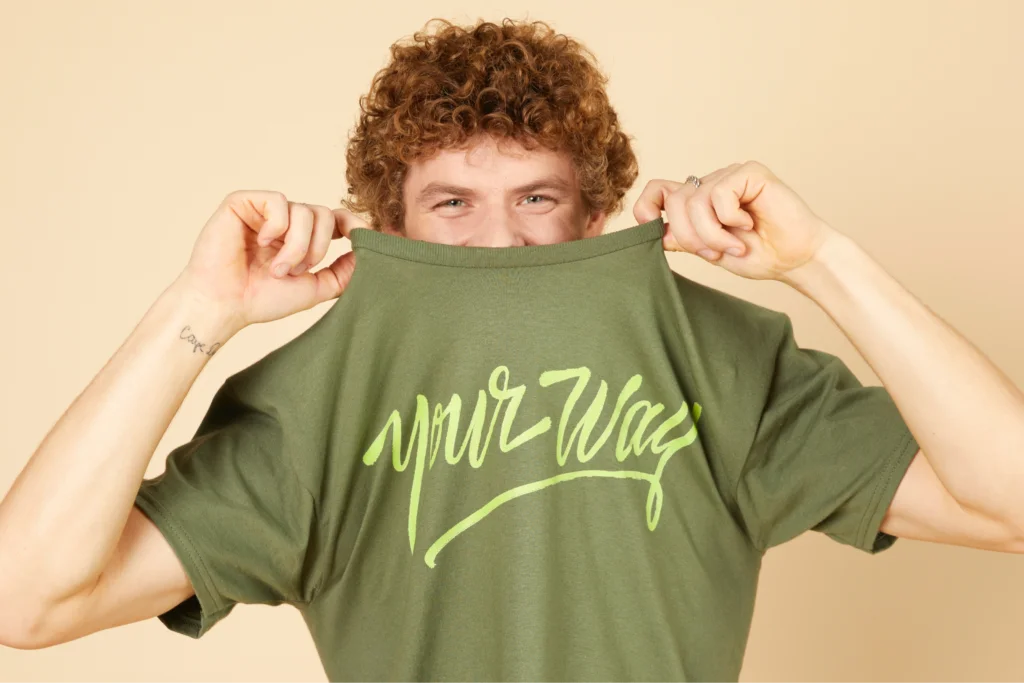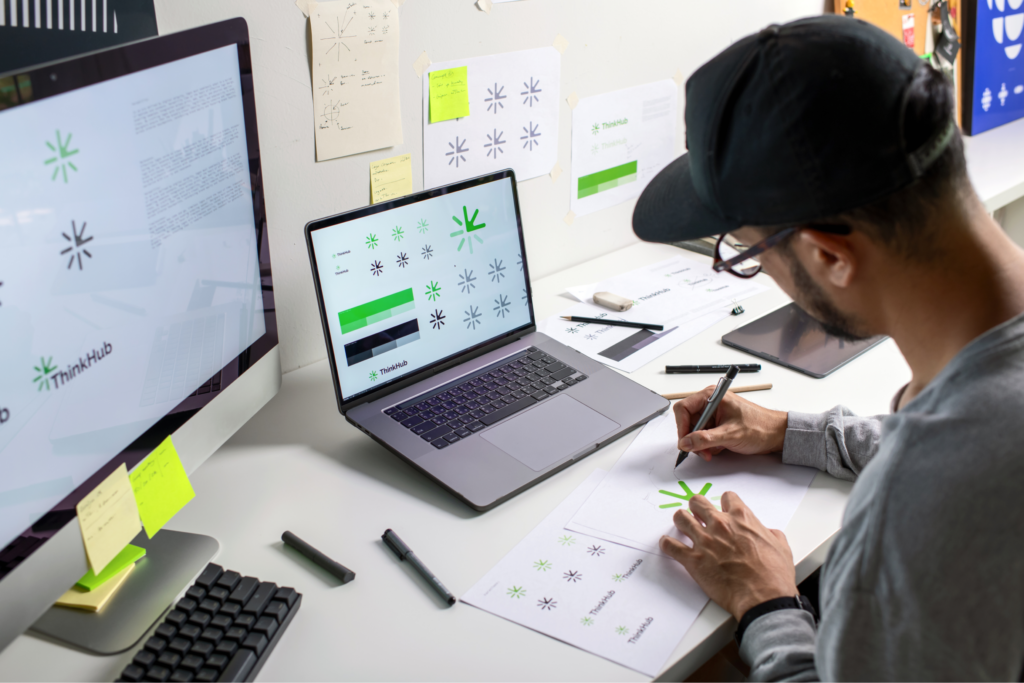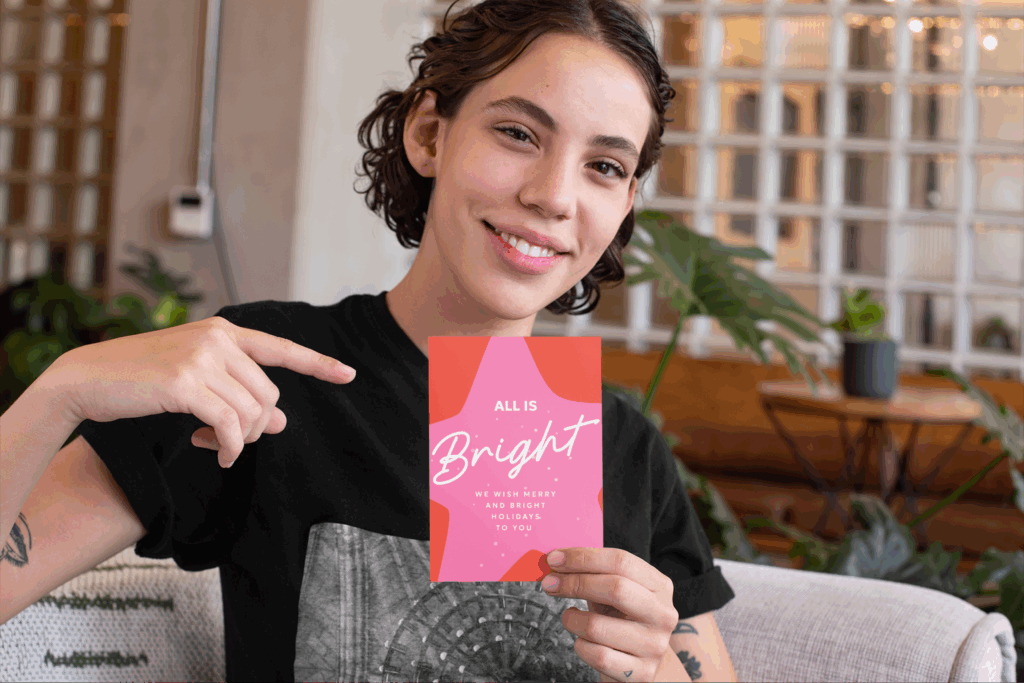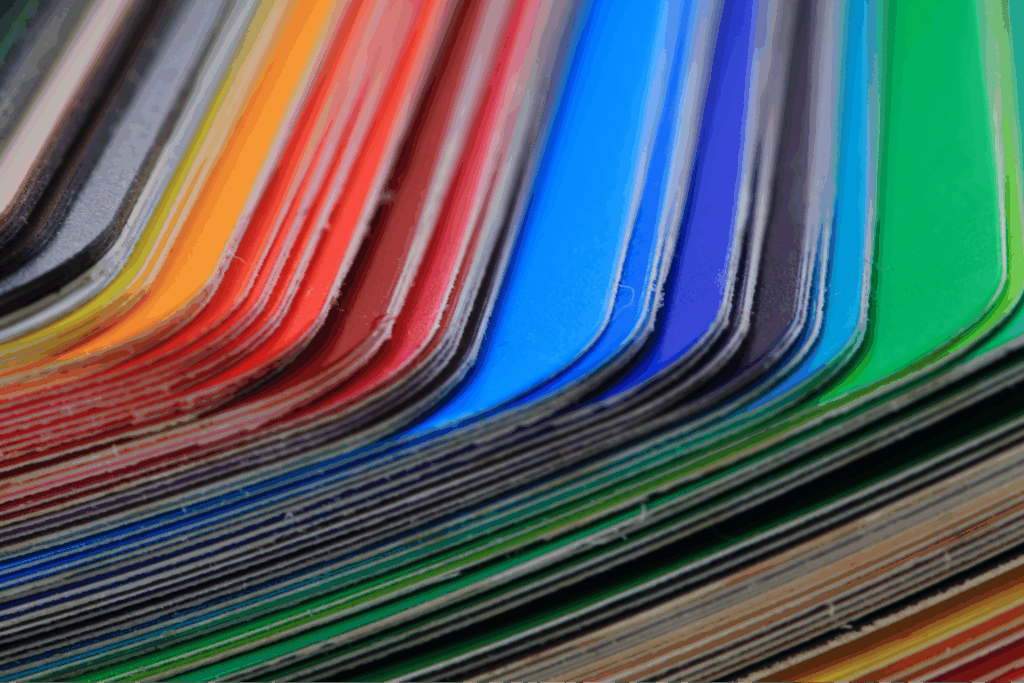Start a custom printing business with Printify
What is the difference between direct-to-garment and screen printing? Choosing the right method is essential for your apparel business, whether you’re into dropshipping or Print on Demand (POD).
This article explores the pros, cons, quality, cost, and durability of DTG vs screen printing. Let’s find out which is the better printing option for your business needs.
Key takeaways
- Choose direct-to-garment (DTG) for small orders and intricate designs. This printing method is perfect for producing highly detailed, photorealistic custom designs.
- Choose screen printing for bulk orders. Screen printing has a high production speed and excels in cost-effectiveness.
- Quality and durability. Both methods produce high-quality results, but screen printing typically offers longer-lasting results, making it a better choice for items like sports uniforms or business apparel.
- Environmental impact. DTG is a more sustainable option, using eco-friendly, water-based inks and minimizing waste by printing items on demand, reducing overproduction.
- Cost considerations. Screen printing is more cost-effective for large orders, while DTG’s lower setup costs make it more affordable for small-scale production.
What is screen printing?

Screen printing is one of the most popular printing methods. It uses a mesh stencil to transfer ink onto fabric, producing vibrant t-shirt designs.
Previously known as silk screening, the printer creates a stencil on a fine mesh screen and then pushes the ink through it to achieve the desired outcome, imprinting the final design on the garment.
This printing method uses thick inks that lay on top of the material rather than soaking into the fabric. Multiple colors require several layers of ink, with a different stencil for each ink. More colors and layers mean a longer setup and printing time for smaller batches.
What is DTG printing?
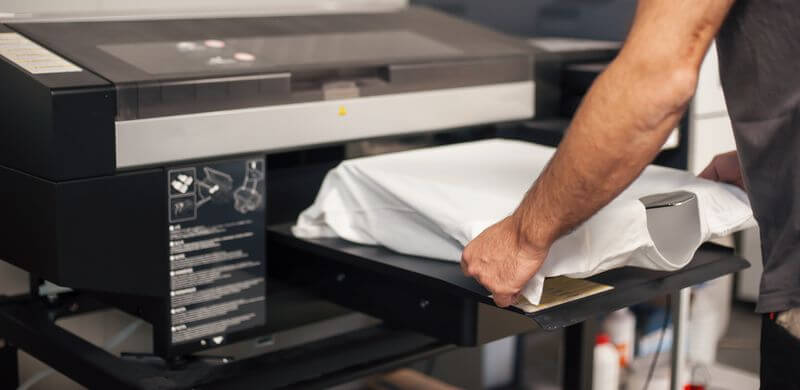
Direct-to-garment printing is a newer printing process that uses a specialized DTG printer to spray ink onto a garment to soak into the fabric. It works best with natural fibers like cotton.
DTG printing uses an inkjet printer to print a digital image directly onto the fabric. The process begins by pre-treating the garment, which is especially important for darker fabrics, to prepare the surface for better ink adhesion.
After printing, the ink needs to cure under heat, making the final design washable and durable. This method requires minimal setup time, ideal for custom-printing multicolor and detailed designs on demand.
DTG vs screen printing: Which is better?
DTG and screen printing are two of the most popular methods for custom apparel printing. Both techniques offer high-quality results, but each has its own advantages and drawbacks.
The best choice depends on your budget, the complexity of your designs, and the quantity of products you need for your custom apparel business.
Let’s explore the differences between a DTG print and a screen print to see how they compare.
| DTG | Screen printing | |
|---|---|---|
| Quality | Photorealistic prints on lighter and natural fabrics | Produces vibrant colors on light and dark fabrics |
| Durability | Withstands over 50 washes | Screen prints can last decades |
| Complexity of designs | Excellent for detailed and intricate designs | Difficult to print finer details |
| Sustainability | Uses environmentally friendly water-based ink and is energy-efficient | A labor-intensive process requiring a lot of water that’s prone to overproduction |
| Minimum order | Order as few as you like for on-demand printing | Has minimum order requirements, usually between five to 100 units |
| Production time | Slow but sufficient for small orders | Quick production time after the initial setup – perfect for high-volume orders |
| Average cost | Affordable and efficient for printing small orders Expensive for bulk production | Costly for small on-demand orders, great for printing in bulk More colors equal more cost |
Quality
Print quality is fundamental to meeting your customer’s expectations, especially when printing personalized apparel like t-shirts, hoodies, or custom sweatshirts.
The screen printing process delivers vibrant, saturated, durable prints on various fabrics like cotton, polyester, and blends. Unfortunately, each color requires a separate screen, requiring more time and effort to set up.
DTG printing produces high-quality results but on specific garments. It’s best for lighter-colored, natural fabrics like cotton, while darker fabrics require pre-treatment. This lets you print highly detailed, photorealistic images.
When it comes to printing for profit, quality DTG printing is the go-to printing technique for designers, creatives, and other print-on-demand entrepreneurs needing small-batch solutions.
Durability
Many consumers look for well-made products that are built to last and can stand the test of time.
With proper care, DTG prints can withstand over 50 washes. Screen printing is generally more durable and can last the garment’s lifetime, making it ideal for high-intensity garments like sports or business uniforms.
But if you’re looking to sell everyday items like custom t-shirts or other custom apparel, DTG prints provide sufficient durability.
Design complexity

When it comes to intricate details, DTG printing work is the clear winner. A DTG machine is best for full-color, intricate design illustrations, photographs, or gradients.
Depending on the design and application, the screen-printing process can leave visible dots on the garment. Although it’s great for solid colors, this risk occurs when simulating gradients or complex designs.
Meanwhile, DTG printers provide phenomenal resolution as inks absorb directly into the fabric, giving a soft and detailed finish.
Make it happen today!
Sustainability
Around 92 million tons of textiles go to waste every year, which means sustainability is crucial – particularly when selling to environmentally conscious consumers.
When comparing the two printing methods, DTG is more sustainable. DTG machines are energy-efficient and typically use environmentally friendly, water-based inks.
Using a print-on-demand service makes DTG even more sustainable because printing occurs after a customer makes a purchase, saving money and reducing waste.
With screen printing, overproduction is a common risk. It’s a cost-effective solution when printing in bulk quantities, but unless sold, products may end up in landfills. Plus, most screen printing techniques still use plastic-based inks called plastisol, requiring solvents for proper disposal.
Minimum order quantity
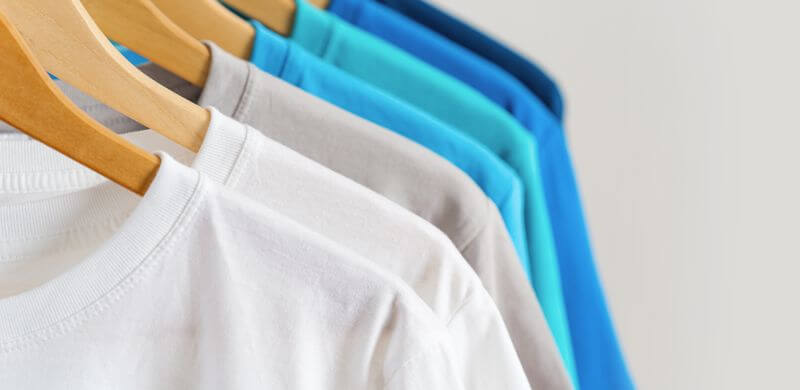
Many choose DTG as their favorite on-demand printing method because there’s no minimum order quantity. This makes DTG printing an excellent solution for producing one-off t-shirt designs. The process is also hassle-free when using a POD service like Printify.
Things are a little more difficult with screen printing. A lot of third-party print services have minimum order requirements. If you’re just starting out or simply want to experiment with new designs, screen printing can get costly and time-consuming.
Production time
Screen printing involves a longer setup time, but once the stencils are created, production moves quickly. That’s why it works best for bulk orders – some screen printing presses can produce up to 1,000 pieces an hour.
DTG printing is slower, but it’s perfect for on-demand production. Print just one item, and if the product does not sell, replace it or discontinue without worrying about inventory. It’s great for those who want to enter a new market with a limited budget.
Average cost
Whether you’re just starting a clothing line or thinking about scaling your existing business, choose a printing method that will meet your business goals in the most cost-effective way.
If you prefer the look of screen printing, be ready to order in bulk. The setup makes screen printing too expensive and inefficient for low-quantity orders and complex designs. The number of colors and screens you need also impacts the final price.
DTG printing reduces the setup costs for a single garment. With this method and the right print-on-demand partner, you can print a single product and still make a profit.
FAQ – Direct-to-garment or screen printing?
The choice between direct-to-garment vs screen printing depends on your specific needs.
Traditional screen printing is better if you need to print hundreds of items with fewer colors due to its cost-effectiveness and vibrant color output.
DTG is ideal for smaller orders and intricate designs, offering photorealistic quality with no minimum order requirements.
Screen printing generally lasts longer than DTG. The thick inks in screen printing lay on top of the fabric, making the print more durable and able to withstand more washes, especially for heavy-use garments like uniforms.
DTG prints use inks that absorb into the fabric. For everyday items, this method is also durable with proper care, typically withstanding over 50 washes.
The main cons of DTG printing include slower production times and higher costs for bulk orders. It’s also not as effective for producing vibrant colors on different fabric types – it works best with natural fibers like cotton.
No, DTG is not low quality. DTG printing is known for producing high-quality, photorealistic prints with fine details. It is especially suitable for complex designs and multicolor prints.
While it may not achieve the same color vibrancy as screen printing, DTG provides excellent quality for small orders and on-demand printing.
In summary: Direct-to-garment printing vs screen printing
As eCommerce continues to surge and Print on Demand becomes increasingly profitable, it’s worth find If you’re just starting out, DTG printing is your best bet. It’s perfect for introducing new designs to the market with little cost. Here’s why:
- Photorealistic image quality on natural fibers.
- No upfront investment with Print on Demand.
- No minimum order quantity.
- Environmentally friendly.
Screen printing, on the other hand, is perfect for those who are ready to order in bulk and have a bigger startup budget. Here are its main advantages:
- Durable, high-quality prints on various fabrics.
- Cost-effective for large-scale printing.
- Produces vivid colors.
- High production speed after initial setup.



